-
Car Reviews
- All reviews
- Midsize SUVs
- Small cars
- Utes
- Small SUVs
- Large SUVs
- Large cars
- Sports SUVs
- Sports cars
- Vans
Latest reviews
- Car News
-
Car Comparisons
Latest comparisons
- Chasing Deals
New Australian tuning, adopted for the world, improves the Outlander’s driving dynamics, and spec is more plentiful, but prices are also up for 2025
The Mitsubishi Outlander is currently trading places with the outgoing Mazda CX-5 to be Australia’s second-most popular midsize SUV in 2025—and bolstering the Mitsubishi’s position is the reinstatement of a long-dormant Australian suspension and steering tuning program designed to polish the way the Japanese SUV drives.
From when it launched in fourth-generation form in 2021, to the present, Chasing Cars has praised the Outlander’s roomy cabin, easy-to-use tech and the availability of an efficient plug-in hybrid powertrain at extra cost. But we’ve repeatedly criticised the Outlander’s mediocre ride and handling.
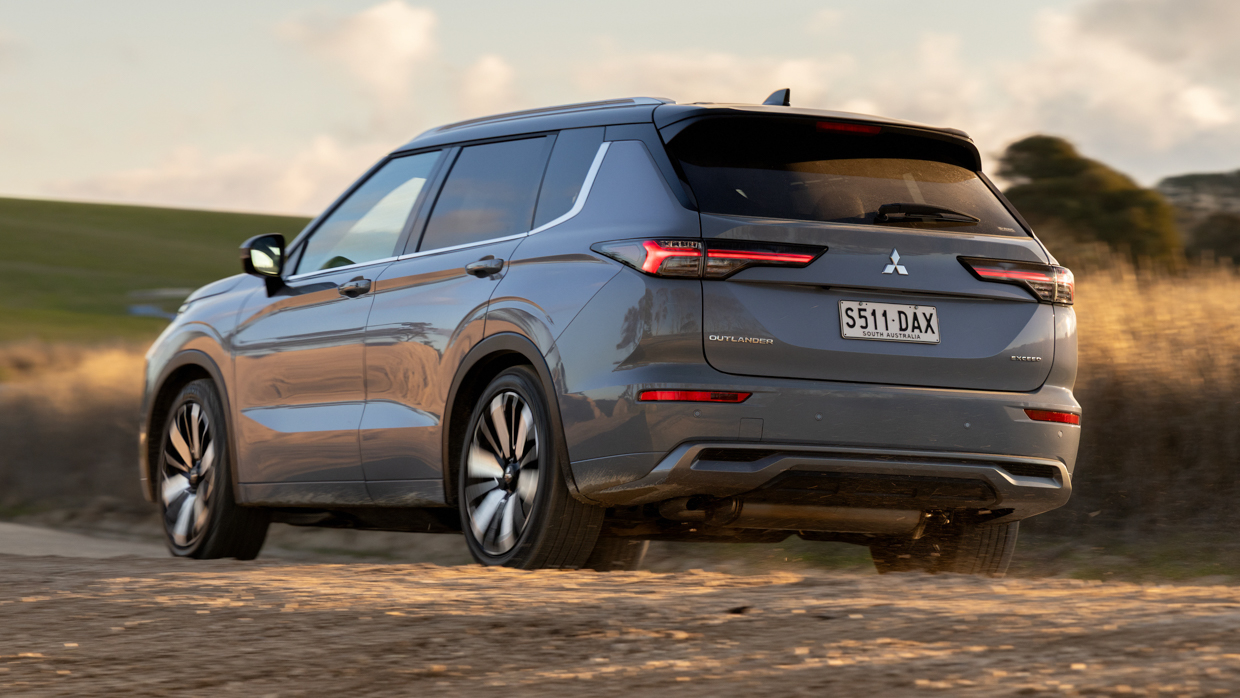
An early mid-life upgrade to the Outlander has now landed in Australia packing local changes to the dampers, spring rates, anti-roll hardware, and steering feel. Mitsubishi head office in Tokyo thinks the adjustments have been so successful that the Aussie-spec Outlander tune is now being used for global production.
That’s a huge coup for the reinstated Mitsubishi Australia suspension team that also did some local prep work for the latest Triton ute—but before that, they worked on the 380 and Magna sedans, which were always praised for decent ride. Remember those cars?
As well as the changes under the skin, Mitsubishi has fiddled with the Outlander’s Aussie specs to reflect what it sees as two emerging buyer demographics: young families who prefer seven-seats (LS and Aspire), and empty nesters that like a bit of luxury but want five seats and a full-size spare (Exceed and Exceed Tourer).
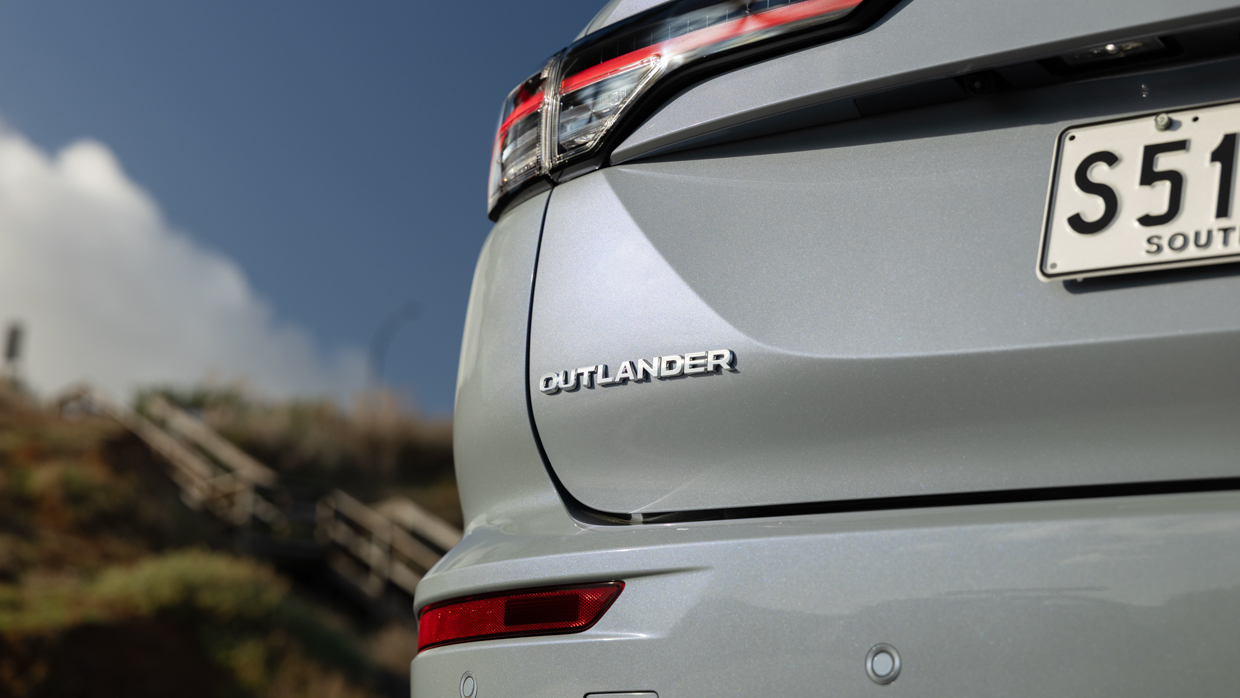
Seat count per variant isn’t the only thing that has changed: there are subtly revised styling cues, new wheel designs, different colours and also some worthwhile extras including larger screens and Yamaha stereos across the range, plus internet connectivity with a useful companion smartphone app.
We travelled to Adelaide, and to Mitsubishi’s South Australian road testing loop, to sample the upgraded MY25 Outlander. First to arrive in local dealers are Outlanders with petrol-only power (in front- or all-wheel drive), while an improved PHEV comes along in a few months.
This time, we mainly drove the flagship Exceed Tourer petrol — and also mid-tier Aspire and upper-mid Exceed trims — though we weren’t able to sample the lower-end ES and LS variants on 18-inch wheels at all.
Perhaps unsurprisingly, accompanying the hardware, software, tech and spec bumps to the Outlander are price increases — typically around five percent but up to nine percent if you consider that the Exceed and Exceed Tourer also lose their previously-standard third row.
The entry point remains the five-seat ES ($39,990 FWD, $42,490 AWD) which nabs new toys in twin 12.3-inch displays and an eight-speaker Yamaha Premium stereo. ES also includes 18-inch wheels, auto LED headlights, wireless Apple CarPlay/Android Auto, DAB/AM/FM radio, and cloth seat upholstery with manual front seat adjustment.
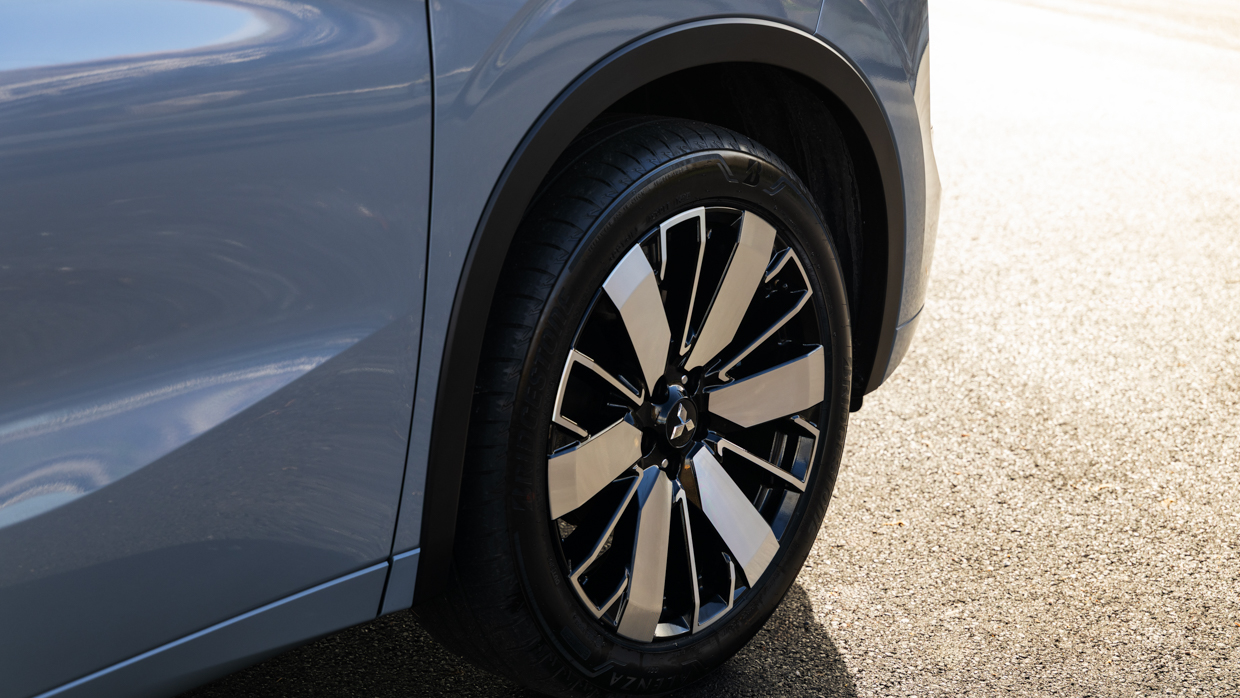
From there, it’s a worthwhile $3300 step to the LS ($43,290 FWD, $45,790 AWD), which retains cushier 18-inch wheels but adds a third row, slide/recline functions for the second row, leather steering wheel and shifter, privacy glass, roof rails, online connectivity, auto wipers, a smart key, more USB ports, a cargo cover and all-around auto up/down windows.
Large 20-inch wheels become standard in the $4500 step up to the Aspire ($47,790 FWD, $50,920 AWD), which above an LS also scores a black microsuede/Granluxe seat upholstery, a power driver’s seat, heated steering wheel, 10.8-inch head-up display, better adaptive headlights and a traffic jam stop-and-go cruise control function.
After Aspire, AWD becomes standard in the $4220 leap into an Exceed ($55,140), which picks up a panoramic opening sunroof with shade, cooled front seats, digital rear view mirror, aluminium pedals, leather upholstery, memory for the driver and power passenger seat, a third (rear) climate zone, hands-free power tailgate opening, and auto-tilting mirrors.
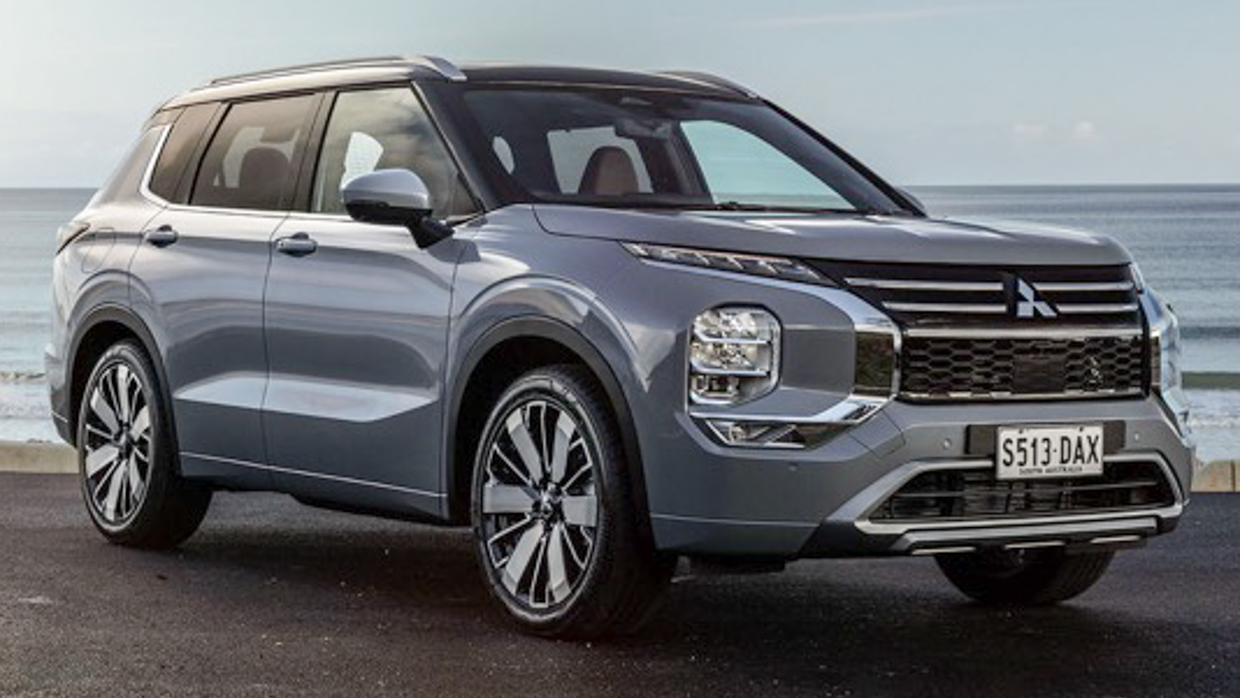
The final upgrade is a $2850 jump into the flagship Exceed Tourer ($57,990), which completes the package with a 12-speaker Yamaha Ultimate stereo with subwoofer, driver and front passenger massage functions, heated rear seats and a standard black roof.
Safety is generally standard, with autonomous emergency braking (AEB) with car/pedestrian detection, reversing AEB, adaptive cruise control, blind spot monitoring, rear cross traffic alert, 360-degree camera, front/rear sensors and driver monitoring included range-wide, though strong lane-keeping assistance is only added at Aspire.
While prices are up, the Outlander Exceed Tourer we spent most of our drive time in remains competitively priced against well-known AWD, non-hybrid rivals, which admittedly continue to offer a standard third row at this price, though the Chinese can be cheaper.

Key rivals, with relative pricing, include:
The Outlander doesn’t aim to be the sportiest SUV to drive and, in fact, its engineers aimed for a comfort bias from the start — appropriate for family and retiree buyers. However, the initial release of the fourth-generation Outlander was marked down for harsh ride quality, loose handling and a mediocre petrol engine.
An improvement has been banked for MY25 with the Australian team not only evaluating the car on tough South Australian roads (and at Victoria’s Lang Lang proving ground), but also by securing a number of improvements now built into all global Outlander production.

Key changes include a new internal piston design for the rear dampers, revised bump/rebound strokes for the front and rear shocks, new spring rates all round, and a retune of the electric power steering system — the latter palpably reducing the on-centre dead spot and slowing steering response to a good level. It was too frenetic before.
In a rare opportunity we were able to do back-to-back test driving of the pre-update MY24 Outlander and the MY25 range on the same roads in immediate succession. We noticed about a 20 percent improvement in ride comfort on rough country road surfaces with impressively reduced head toss and tummy jiggle in the cabin.
The biggest gains have been made over patchy roads when you’re driving 60-100km/h — outer suburban areas and country routes, that sort of thing. The Outlander is more settled at those times than before. But sadly, uncomfortable impact harshness over urban bumps (like potholes and expansion joints at slow speed) are still far too jarring.

Meanwhile, a switch to a thinner front anti-roll bar (and an upgrade to gripper Bridgestone Alenza rubber for trims on 20s) has changed some of the cornering responses. There’s more grip, but body control is (deliberately) slacker to transmit fewer mid-corner bumps to the cabin and allow the body to more fluidly absorb forces.
That has worked, though the additional grip from the better tyres has emphasised an existing, odd trait of the Outlander’s handling, where it can feel pulled from opposing corners. That’s a lack of rigidity in the body, something the Aussie engineers haven’t been able to fix, showing the limits of the local tuning program for an existing car.
Simply put, the Outlander is fine to drive but its handling and comfort still don’t rate up with segment leaders like the Kia Sorento, Hyundai Santa Fe, and Skoda Kodiaq, all of which ask for extra cash for similar features.
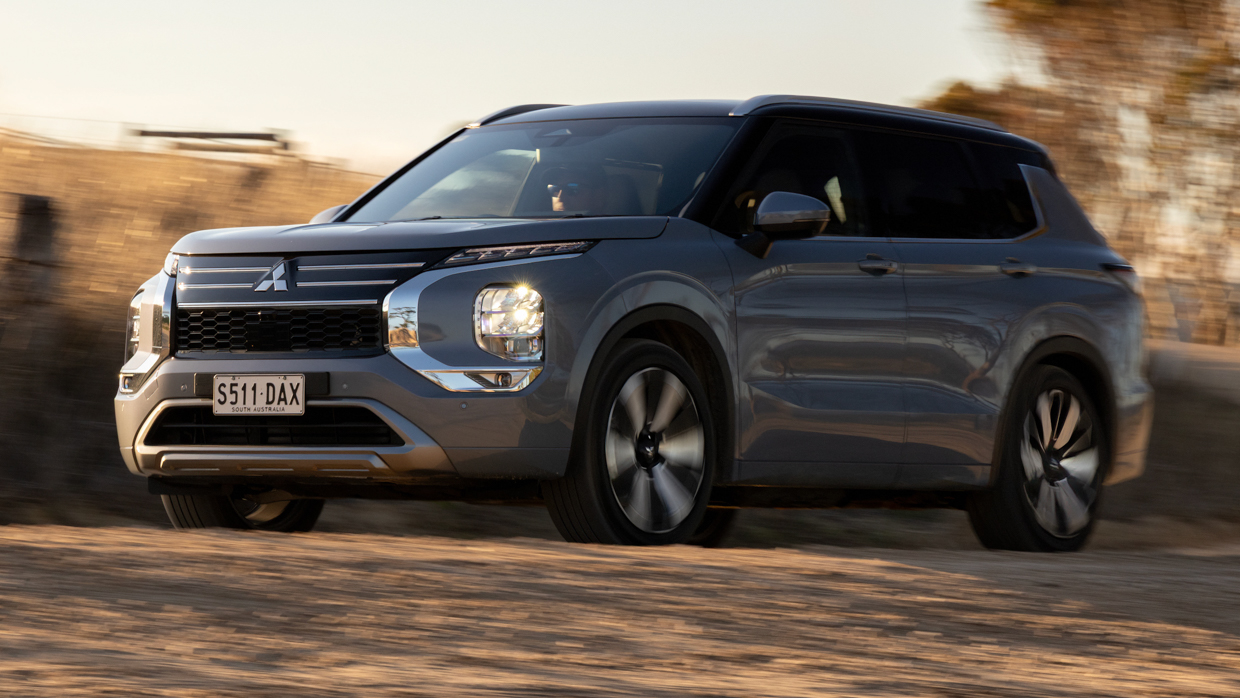
The Australian team also needs to put an electronic stability control (ESC) retune on their radar as the ESC system is still too slack in complex conditions, like when you hit a mid-corner bump and encounter gravel on the road, causing slip before things are brought back under control.
One thing that unequivocally hasn’t improved is the engine, which remains really mediocre. The standard Outlander powertrain continues to be a 2.5-litre, non-turbo, non-hybrid petrol four-cylinder making 135kW of power and 244Nm of torque. A CVT auto is standard.
In Exceed Tourer form the weight is just shy of 1700kg and the Outlander feels stretched when overtaking or getting up to speed quickly. It’s inoffensive enough in town but there is no real power in reserve and the engine and transmission are noisy.
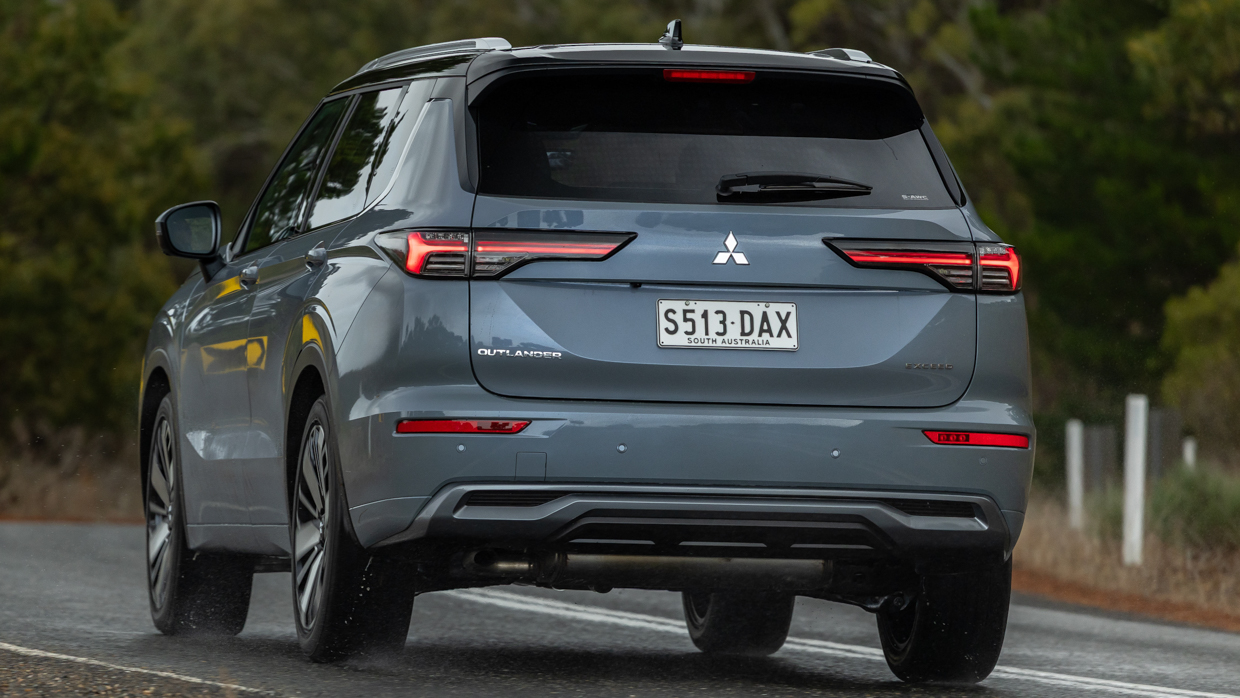
You can option up the Outlander with a much more impressive plug-in hybrid powertrain (slated to produce 222kW/450Nm in MY25 form), though we don’t yet know the upgrade cost — however, the old Exceed Tourer cost $71,790 in PHEV format.
What’s missing here is a regular hybrid with better efficiency and electric torque (such as the e-Power system used in the Outlander’s Nissan X-Trail cousin) or a turbo petrol engine that would return similar fuel economy to today’s 2.5L with greater power and refinement.
Alongside the handsome exterior styling which continues to play well in the midsize SUV segment (Aussies love the 20-inch wheels, Mitsubishi says), the current Outlander also pretty much nailed its interior layout.
While the cabin isn’t trimmed from the plushest of stuff, the interior looks appealing (particularly now with twin, large-ish screens) and the controls are ergonomic and clear. The retention of physical steering wheel buttons, climate and volume knobs and the right amount of hard buttons feels inspired rather than dated.


Speaking of the new displays, they run software shared between Mitsubishi and Nissan, and the inbuilt software is straightforward if plain; the digital driver display offers a nice range of customisation and information. Wireless Apple CarPlay and wireless Android Auto work well.
Sound quality from the ES to the Exceed, which have an eight-speaker Yamaha unit, is decent for the class but the aural experience is absolutely transformed in the Exceed Tourer, which exclusively runs a 12-speaker Yamaha Ultimate unit with crystal clear reproduction. This is one of the best stereos out there at the moment.
An oddity of Mitsubishi’s family buyer/seven-seat, empty nester/five-seat range switch-up is that the seven-seaters all have cloth trim (microsuede on Aspire) whereas the five-seaters get easier-to-clean leather — with heating and cooling, the latter finished in a quite attractive ‘Brick Brown’ in the Exceed Tourer.

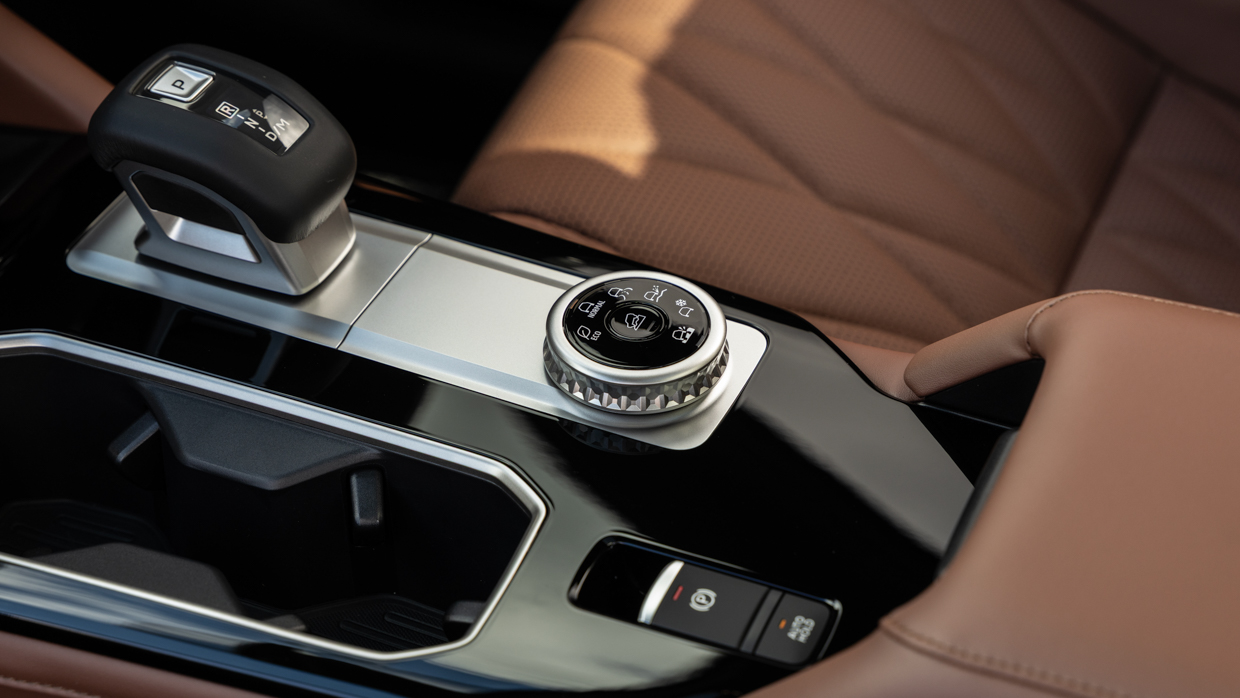
The air-conditioning works well, blowing cold or hot strongly, and it can be activated remotely from the companion Mitsubishi smartphone app and connectivity features standard from LS and up.
We found the front seats to be reasonably comfortable and supportive with plenty of oddment storage dotted about the cabin, though the Outlander eschews the open dash shelving that has become increasingly popular in family crossovers.
All passengers will appreciate that the Exceed/Tourer have a sunshade for their panoramic sunroof, and those in the back will find the second row commodious enough for adults — standard rear air vents keep the air blowing while kidlets ferried in top-spec Outlanders even enjoy heated pews and sunblinds.
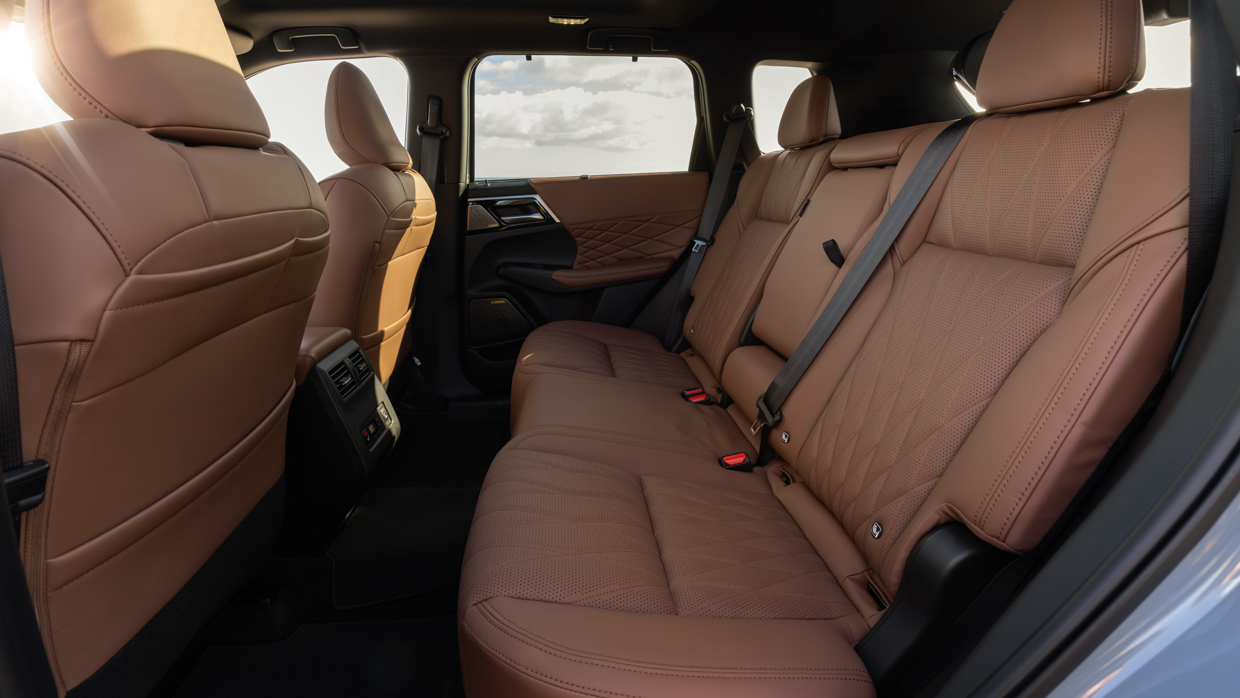

Seven-seat versions are extremely tight in the rear, sure, but the stowaway “plus two” seating is a great amenity to have when you need to transport extra bodies in a pinch, and its removal from the Exceed/Tourer is a net negative. Still, the fitment of the third row downgrades a full-size alloy spare to a space-saver. The PHEV has no spare.
Boot space is only middling for the class at 485 litres, but it’s big, and square, and features niceties like one-touch drop-down mechanisms for the folding rear sear seats and a power tailgate from Aspire upward.
The subtle changes to the Outlander are not likely to affect its five-star ANCAP crash and safety rating which was awarded in 2022 and is not due to expire until December 2028.
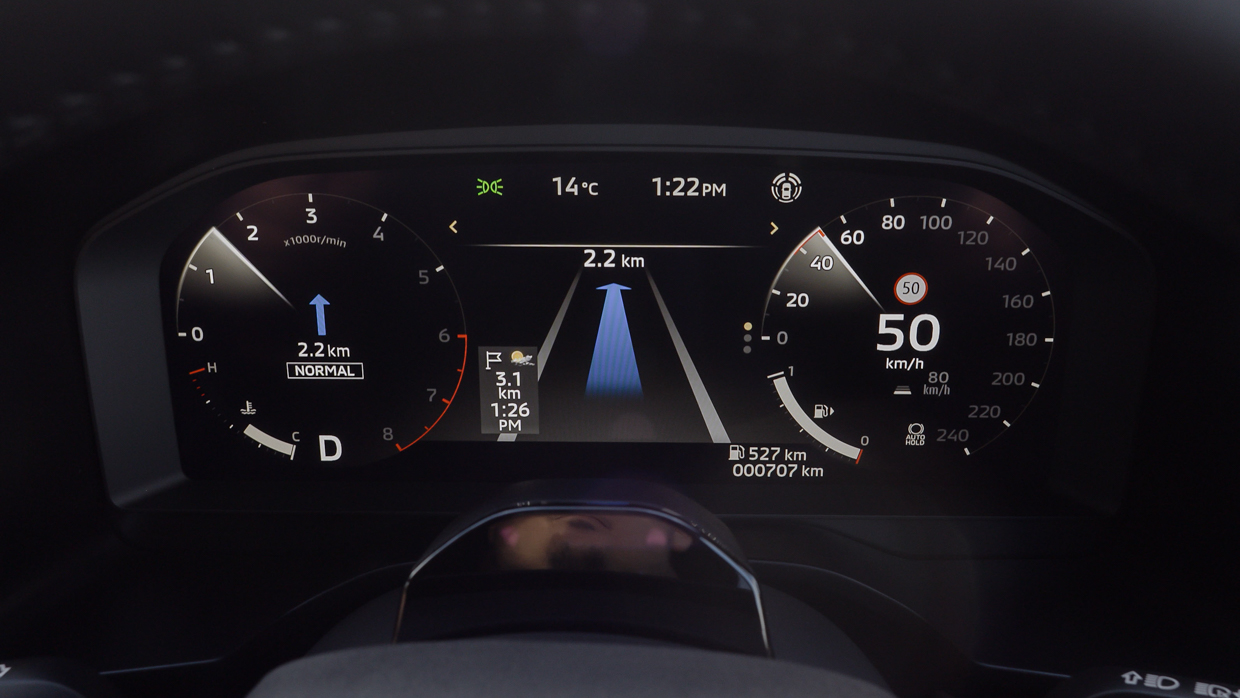
When that testing occurred, the Outlander scored the following results:
In our testing, we were able to sample the operation of the adaptive cruise control, lane keeping assist and blind spot monitoring systems which all worked to our expectations.
Unfortunately, a new addition for 2025 — a driver monitoring system with software revisions previously deployed to the Triton ute — remains more of a distraction than a help to drivers, with the system pinging us for head-checks or briefly looking at the central touchscreen.

The fitment of a 360-degree camera with front/rear parking sensors across the range is an appreciable safety upgrade.
We were not able to test the performance of the AEB systems, but they are fitted range-wide.
Running costs are dramatically different depending on whether buyers opt for the cheaper, thirstier standard petrol engine, or the historically considerably more expensive, but efficient, plug-in hybrid system.
As we don’t know final Australian details for the MY25 Outlander PHEV, we’ll set that aside for now.
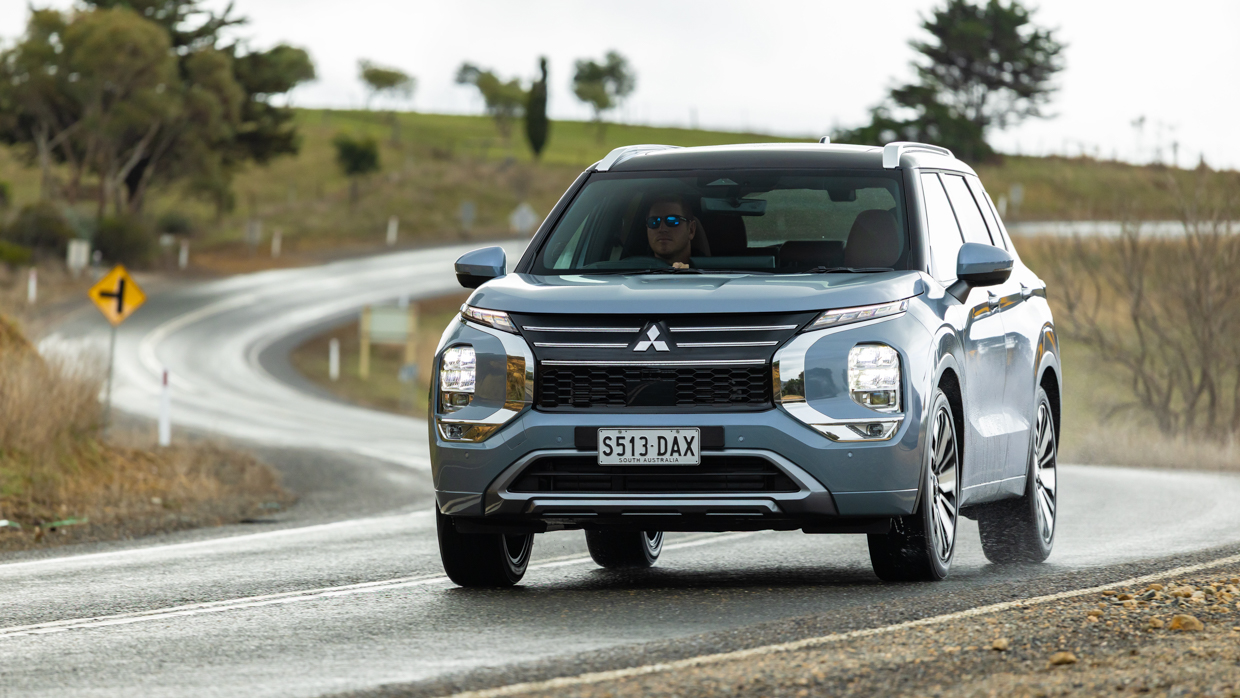
The 2.5-litre petrol likes a drink; we saw 9.1L/100km in combined testing (biasing country and highway), and up to 11.0L/100km in town. Its 55-litre fuel tank accepts 91-octane petrol and will deliver a range, in the real world, of about 600km depending on driving style.
Mitsubishi Australia continues to make much hay from its — highly conditional — 10-year/200,000km new car warranty. Careful: as standard, it’s actually a five-year/100,000km warranty extendable annually from the five-year mark by servicing the car with Mitsubishi dealers.
At least the 12-month/15,000km servicing visits are reasonably priced: the first five years total $1700, though years six-10 (the ones that qualify owners for the extended warranty) get pricier, totalling $2640.
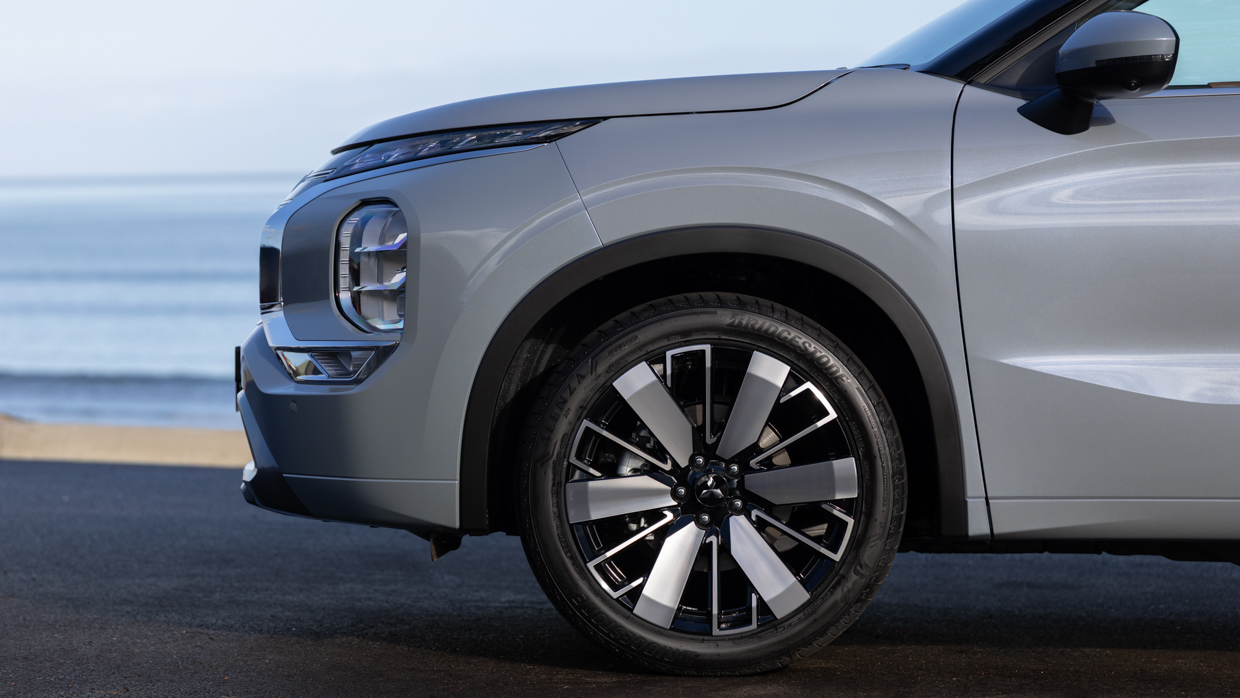
At the time of writing, Mitsubishi Australia is offering the first three annual services ($1010 value) free with the purchase of an MY25 Outlander.
Despite the price increases, the Mitsubishi Outlander remains one of the best-value SUVs on the Australian market.
This is a straightforward family vehicle that is well-presented and packing a roomy and intuitive cabin. Additional features and technologies added for 2025 increase its desirability, especially at the lower end of the range.
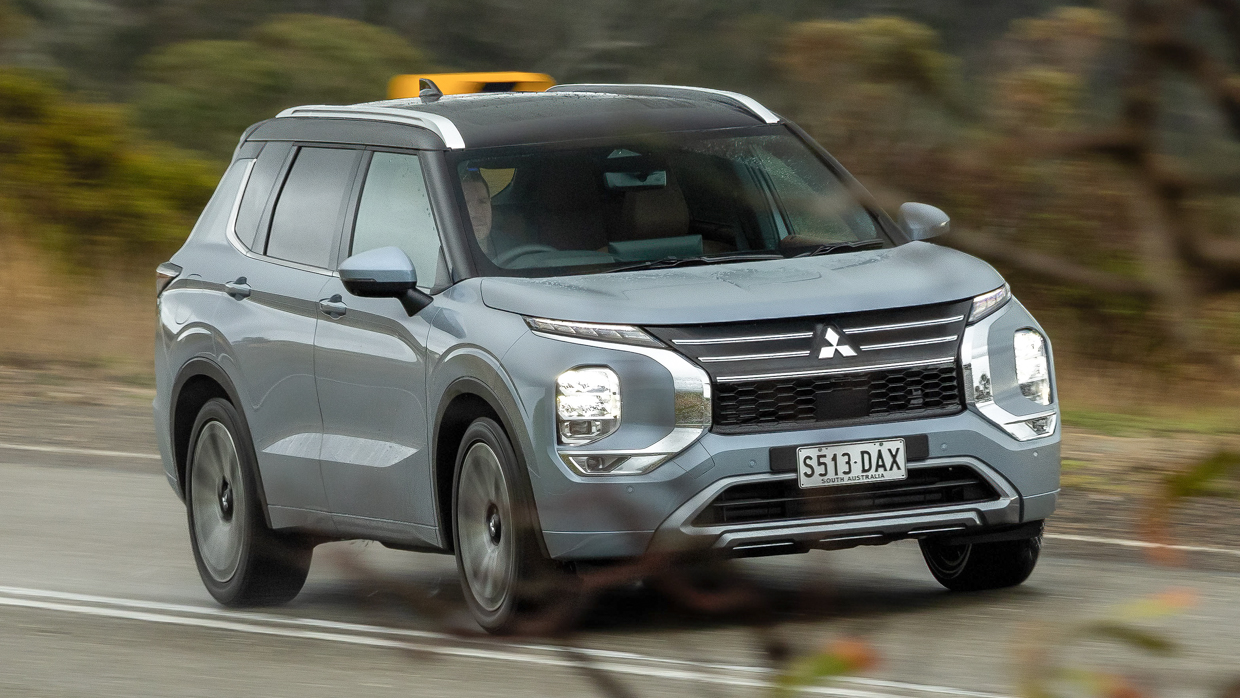
Plus, the suspension and steering improvements deliver a better driving experience. It’s still far from perfect, and European and Korean rivals in particular offer a superior experience (for an extra spend), but the Outlander is fairly inoffensive dynamically.
It will be interesting to watch whether Mitsubishi’s reinvigorated Australian ride and handling tuning team can bank bigger improvements on future vehicles. We know they are turning their attention to the forthcoming Mitsubishi-Foxconn electric SUV, due in 2026.
The Exceed Tourer offers a substantial amount of specification for a low-$60,000 spend (on-road) while packing the unusual easter-egg of a truly top-class car stereo.
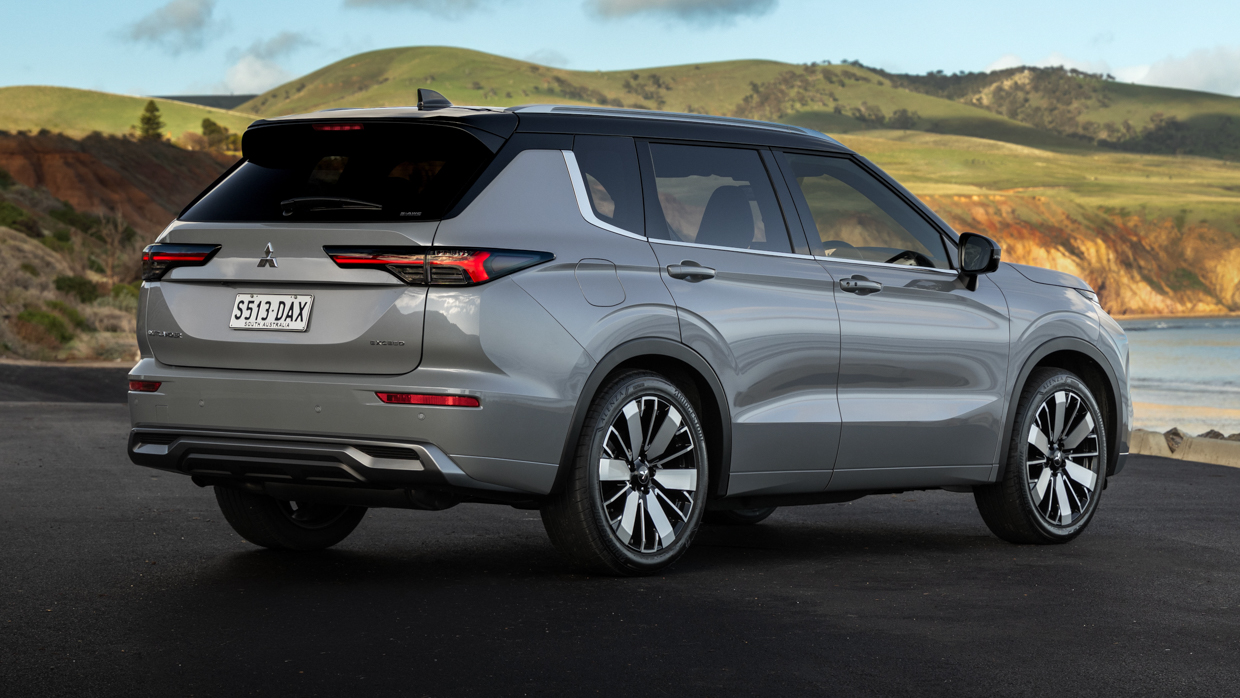
It’s also good to see Mitsubishi getting on the front foot of car connectivity in a class that sees many established vehicles continue to lag behind on the software front.
Cheaper alternatives to the Outlander, such as the Chery Tiggo 8 Pro Max, offer savings without the possible benefits of Mitsubishi’s more established network and reputation. Still, it’s worth test driving those cars.
Key specs (as tested)
About Chasing cars
Chasing Cars reviews are 100% independent.
Because we are powered by Budget Direct Insurance, we don’t receive advertising or sales revenue from car manufacturers.
We’re truly independent – giving you Australia’s best car reviews.
The estimate provided does not take into account your personal circumstances but is intended to give a general indication of the cost of insurance, in order to obtain a complete quote, please visit www.budgetdirect.com.au. Estimate includes 15%^ online discount.
^Conditions Apply
Budget Direct Insurance arranged by Auto & General Services Pty Ltd ACN 003 617 909(AGS) AFSL 241 411, for and on behalf of the insurer, Auto & General Insurance Company Limited(ABN 42 111 586 353, AFSL 285 571).Because we don’t know your financial needs, we can’t advise you if this insurance will suit you. You should consider your needs and the Product Disclosure Statement before making a decision to buy insurance. Terms and conditions apply.
Indicative quote based on assumptions including postcode , 40 year old male with no offences, licence suspensions or claims in the last 5 years, a NCD Rating 1 and no younger drivers listed. White car, driven up to 10,000kms a year, unfinanced, with no modifications, factory options and/or non-standard accessories, private use only and garaged at night.
^Online Discounts Terms & Conditions
1. Discounts apply to the premium paid for a new Budget Direct Gold Comprehensive Car Insurance, Third Party Property Only or Third Party Property, Fire & Theft Insurance policy initiated online on or after 29 March 2017. Discounts do not apply to optional Roadside Assistance.
2. Discounts do not apply to any renewal offer of insurance.
3. Discounts only apply to the insurance portion of the premium. Discounts are applied before government charges, taxes, levies and fees, including instalment processing fees (as applicable). The full extent of discounts may therefore be impacted.
4. We reserve the right to change the offer without notice.